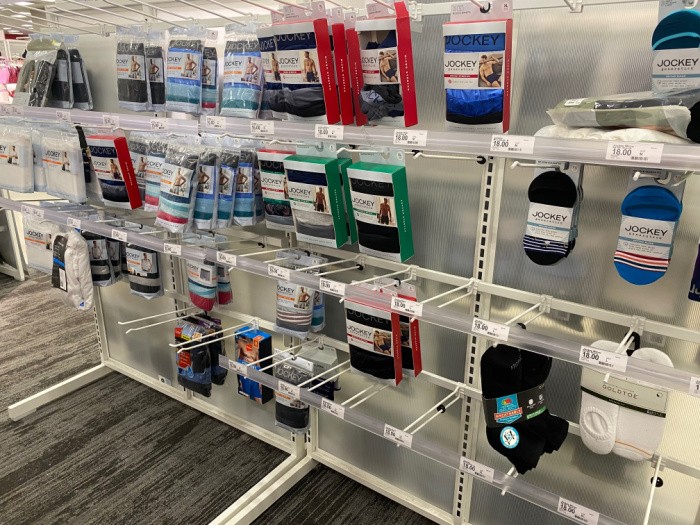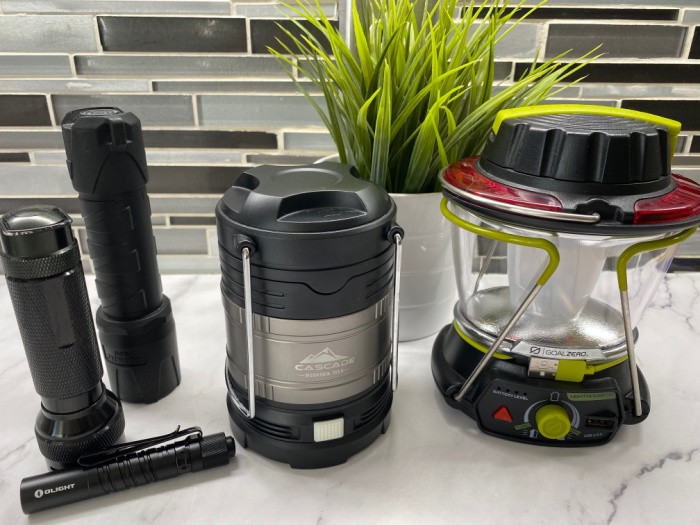10 Quick Tips For Emergency Supplies
Here are 10 quick tips for emergency supplies. Prepping for emergencies is essential, but it can be hard to know where to start. This blog post will give you 10 quick tips on assembling your emergency supplies.
What Are Emergency Supplies?
Emergency supplies are items that you would need in the event of an emergency, such as a natural disaster or power outage. They can also be used in situations where you are stranded and need to survive until help arrives.
Some examples of emergency supplies include food, water, first-aid kits, flashlights, and batteries. Lanterns, Emergency NOAA Radios

10 Quick Tips For Emergency Supplies
Prepping for emergencies can seem daunting, but it doesn’t have to be. Here are 10 quick tips to help you get started!
1. Assemble a Survival Kit
A survival kit is a collection of supplies that you would need in the event of an emergency. It should include items like food, water, first-aid, shelter, and clothing for at least 3 days, but I recommend longer. Some people call this a 72-Hour Kit, or even a bug out or bug in bag.
You can buy pre-assembled survival kits, or you can put one together yourself. If you choose to assemble your own, be sure to tailor it to your family’s specific needs and your location. Check out my Comprehensive Bug-Out-Bag Checklist to make sure you have everything you need. Don’t forget about your kids, elderly people who may live with you, and family members who are not at home. College Students Need Emergency Survival Kits, too.
2. Store Non-Perishable Food Items
One of the most important things you can do to prepare for an emergency is to have non-perishable food items on hand. This will ensure that you have something to eat if there is no power or water available.
Some good non-perishable food items to stock up on include: canned goods, dried fruits and vegetables, peanut butter, pasta, and jerky. FEMA highly recommends the following food items:
- Beans
- Canned fish
- Cereal
- Dried fruit
- Grains
- Nuts
- Pasta
- Soups
- Vegetables
How to Store Non-perishable Food Properly
- Canned goods should be stored in a cool, dry place. If possible, rotate them so that you are using the oldest cans first.
- Dried fruits and vegetables can be stored in airtight containers or bags. Be sure to check for expiration dates and keep them in a cool, dark place.
- Peanut butter and other nut butter(s) can be stored in their original containers. If you open them, be sure to store them in the fridge so that they don’t go rancid. I’d buy a brand of peanut butter that doesn’t have to be refrigerated, like JIF or Skippy.
- Jerky can be stored in a cool, dark place, but it is best if eaten within a few months. The freezer works great for jerky too.
- Pasta can be stored in airtight containers or bags. If you are using dry pasta, it can last for up to 2-8 years depending on the conditions of how it’s stored.
- Beans can be stored in airtight containers or bags. If you are using dry beans, they can last for about 2 years. Yes, I know we all store beans longer than this, but they will take more water and fuel to cook as they age.
3. Keep a Stockpile of Water
In an emergency situation, water is essential. You should have at least 4 gallons of water per person, per day stored in your home. The Red Cross and some government agencies suggest just one gallon per person per day, but it would be such a challenge to live with that restriction. You need water to hydrate, cook, and perform limited personal hygiene tasks.
If you live in an area with frequent power outages, consider buying a water filter so that you can drink from any source of water you might have available. Some people have a pool, pond, a stream nearby, or have a rain gutter cistern on their property.
Filtering systems come in a wide variety of sizes, volume capacities, and filtering techniques like gravity fed or pump fed. Big Berkey is one brand I like and have used. Another brand I just learned about is Portawell. Each has its individual benefits, so you should check them out.
How to Properly Store Water
Water should be stored in food-grade containers. You can buy these at most stores that sell survival supplies or on Amazon!
Be sure to label the containers with the date that you filled them so that you know when to rotate the water to keep it as fresh as possible. You should also have a water filter and purification tabs on hand in case you need to drink from a non-potable water source. Read How to Store Water for Drinking and Cooking for more information.
If you refer to my past posts for helpful information you should not only stay informed, but get the motivation to be as self-sufficient as you should be.
4. Create a First-Aid Kit
A first-aid kit is another essential item for your emergency supplies. It should include items like band-aids, antiseptic wipes, pain relievers, and a thermometer.
You can buy a pre-packaged first-aid kit, or you can put one together yourself. Be sure to include items for any allergies or medical conditions that someone in your family might need.
5. Have an Emergency Fund
In the event of an emergency, it’s important to have money set aside to cover expenses. There is no set amount that we all should put aside since our circumstances are so different. I recommend having a minimum of $500 in an emergency fund to carry you over for the first 72 hours, but more is always better.
You can start an emergency fund by setting aside a small amount of money each month. You can also use it to cover unexpected expenses so that you don’t have to use your credit cards.
Emergency Fund vs Rainy Day Fund
Some may feel differently, but I view an emergency fund as different from a rainy day fund. A rainy day fund is a set amount of money that you set aside for unexpected expenses, such as a car repair or medical bill.
An emergency fund is for major unforeseen events, such as a natural disaster or job loss, and can build to a significant amount so you are sufficiently prepared for the most common emergencies that happen in your specific area.
6. Build an Emergency Kit for Your Car
If you are stranded in your car, you will want to have an emergency kit with you. This should include items like food, water, a first-aid kit, a flashlight, and blankets. This may not be as important for running errands as it would be for day trips or longer vacations. I feel a small kit should always be in your car so you can have a snack, stay hydrated, or take care of young children’s needs when away from home.
You can buy a pre-made emergency kit, or you can put one together yourself. Be sure to store it in an easily accessible location in your car. I recommend building your own to tailor it to your needs. Read How to Put Together a Vehicle Survival Kit for more information.
7. Get Insured
If you own a home or a car, be sure to have insurance. This will help to cover the cost of repairs or replacement in the event of an accident or natural disaster.
There are many different types of insurance, so be sure to research what is available and choose the coverage that is right for you and your family. I’d suggest sticking with the well-known brands and trying to find an agent you know or trust. You can check with your state insurance department to find out how they stack up on the insurance rating charts.
8. Make a Plan
In the event of an emergency, it’s important to have a plan. This will help to ensure that everyone in your family knows what to do and where to go.
Your plan should include things like meeting places, evacuation routes, and how to contact each other. Be sure to practice your plan so that everyone knows what to do. Having the ability to communicate is critical. Have a quality radio so you can stay up on current events and important notices, like evacuation directives.
9. Take Inventory Of Your Emergency Supplies
Periodically, take inventory of your emergency supplies to ensure that everything is in working order and that you have enough supplies for everyone in your family. It’s recommended to do this every 6 months.
Replace any expired items and add new items as needed. This is also a good time to check expiration dates on food and water.
10. Learn Basic Preparedness Skills
One of the best things you can do to prepare for an emergency is to learn some basic preparedness skills. Examples of these skills include knowing how to start a fire, purify water, and administer first-aid. You can find many resources online or from your local library that will teach you these skills.
Final Word
I hope these tips have helped you to understand the importance of emergency supplies. By taking some time to plan and prepare now, you will be better prepared in the event of an emergency. I have bearly brushed the subject in this post. Take some time to check out my archive for more details outlined in each of the tips, it will be time well spent, I promise.
What are some of the things that you have done to prepare for an emergency? Share your tips in the comments below! May God Bless this world, Linda























I personalize each kit. My wife’s car go bag is much smaller than mine. My vehicle go bag carries my meds. I have a machete where she can’t handle swinging one due to damage in her arm.
I carry more guns and heavier weapons because I’m that guy and she isn’t.
I carry a whistle because I’m not used to talking and
making noise all the time like her (I’m joking ) but y’all get the point lol
Hi Matt, oh my gosh, great point about making everyone’s car go bag personalized. It makes sense, but it would be the opposite in my family. My bag would have the good stuff. Mark’s not so much. LOL! Life is good when we’re all different! Linda
Thank you so much Linda for all your efforts and research for us. I did read recently that if you have small children in your life you should have a red washcloth in your first aid kit. When treating the child’s boo-boo the red washcloth will calm them by hiding the blood stains.
I carry at least one dose of each of my husband’s meds even when we are just doing errands. I have carried nitrostate since his first heart attack 43 years ago.
Please stay safe and healthy everyone.
Hi Chris, I have not heard that about the red washcloth, wow! Great idea! You are smart to carry extra medication with you at all times!! Linda
More than one kind of emergency…..The heat index in Western New York hit 102° today. Fortunately we have no need to go out. Tomorrow there are threats of sever thunderstorms.
Hi Chris, I know, right? With the heat, flooding in Yellowstone, and ice storms in the winter, we need to be prepared for all of it. Be safe with those severe thunderstorms coming! Linda